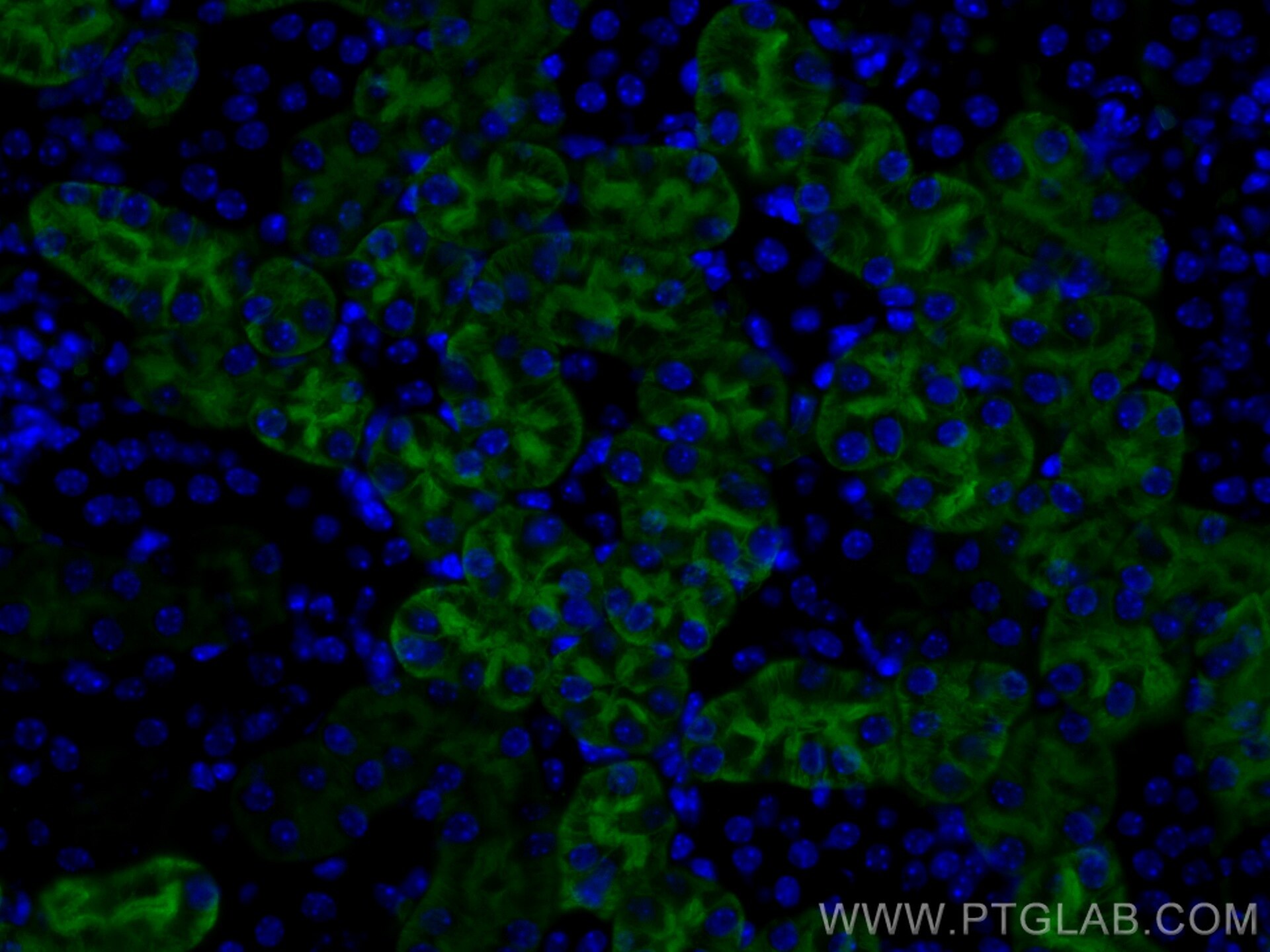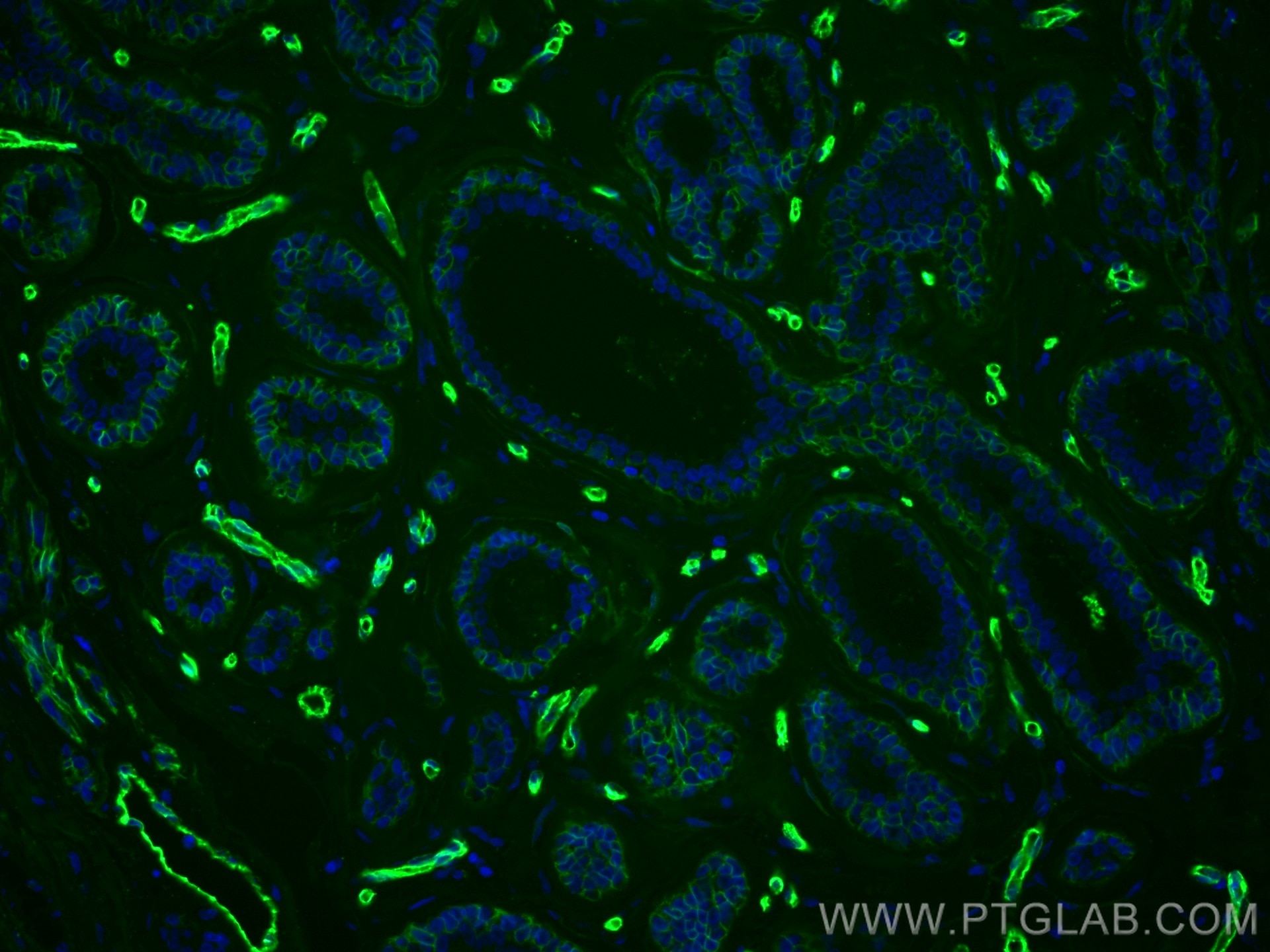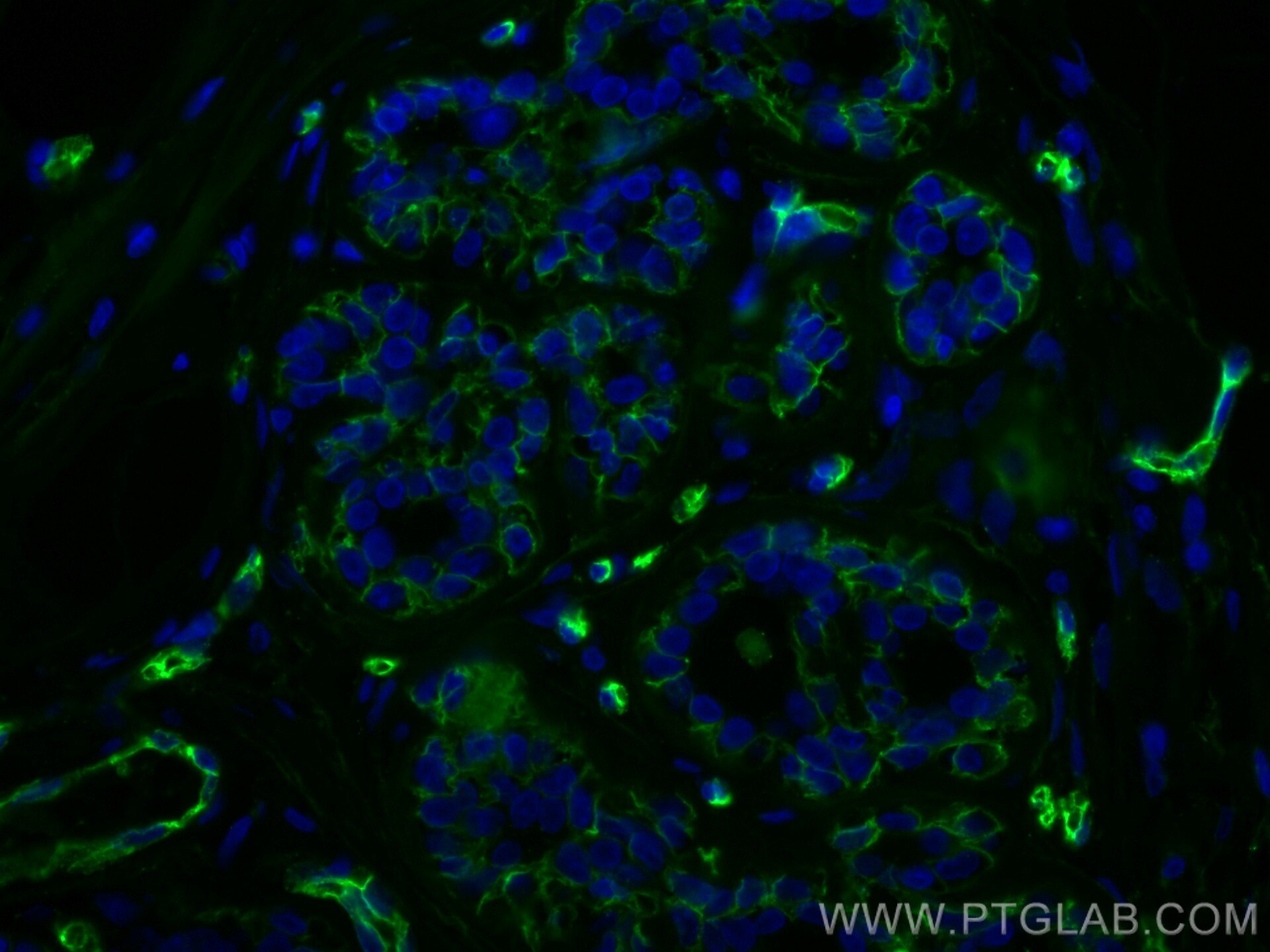Tested Applications
| Positive IF-P detected in | mouse kidney tissue, human breast cancer tissue |
Recommended dilution
| Application | Dilution |
|---|---|
| Immunofluorescence (IF)-P | IF-P : 1:50-1:500 |
| It is recommended that this reagent should be titrated in each testing system to obtain optimal results. | |
| Sample-dependent, Check data in validation data gallery. | |
Product Information
CL488-20333 targets AQP1 in IF-P applications and shows reactivity with human, mouse, rat samples.
| Tested Reactivity | human, mouse, rat |
| Host / Isotype | Rabbit / IgG |
| Class | Polyclonal |
| Type | Antibody |
| Immunogen | AQP1 fusion protein Ag14093 Predict reactive species |
| Full Name | aquaporin 1 (Colton blood group) |
| Calculated Molecular Weight | 269 aa, 29 kDa |
| Observed Molecular Weight | 25-28 kDa, 40-45 kDa |
| GenBank Accession Number | BC022486 |
| Gene Symbol | AQP1 |
| Gene ID (NCBI) | 358 |
| RRID | AB_2919170 |
| Conjugate | CoraLite® Plus 488 Fluorescent Dye |
| Excitation/Emission Maxima Wavelengths | 493 nm / 522 nm |
| Form | Liquid |
| Purification Method | Antigen affinity purification |
| UNIPROT ID | P29972 |
| Storage Buffer | PBS with 50% glycerol, 0.05% Proclin300, 0.5% BSA , pH 7.3 |
| Storage Conditions | Store at -20°C. Avoid exposure to light. Stable for one year after shipment. Aliquoting is unnecessary for -20oC storage. |
Background Information
AQP1 is a member of aquaporins (AQPs) that are small membrane-spanning proteins facilitating water transport. AQP1 is expressed in most tissues in the mammalian body. Alterations of AQP1 expression have been linked to variety of diseases, including cancer. The predicted molecular weight of AQP1 is around 28 kDa, while highly glycosylated form can also be observed around 40-45 kDa. (1530176)
Protocols
| Product Specific Protocols | |
|---|---|
| IF protocol for CL Plus 488 AQP1 antibody CL488-20333 | Download protocol |
| Standard Protocols | |
|---|---|
| Click here to view our Standard Protocols |







